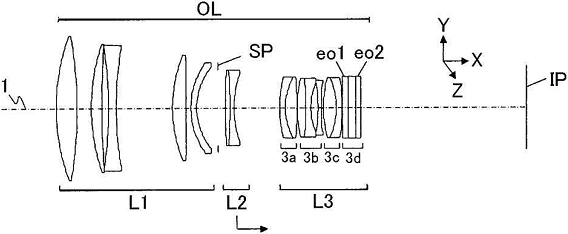This may be something that many people missed, but when Egami (a Japanese blog) produced a patent from Canon for a 300mm f/4, the important part may not have been the possible upcoming tele-lens but the technology used in the lens to reach a better Image Stabilization (IS).
Up to now, Canon and Nikon have been using mobile optical elements in the lens in order to compensate for the hand-shake of the photographer. This way, even if you’re not very steady, your lens will compensate your moves.

But the problem with mechanical image stabilization is that it’s limited by mechanical inertia. You cannot shake a lens block as fast as you’d want. This is perfectly OK for photographer shake (usually under 10 Hz) and it is adequate for vibrations on a tripod (under 40-50 Hz) if you use a really light mobile element. But it becomes tough when you want to correct easily tripod vibrations or even in-vehicle vibrations (usually 10 Hz to 500 Hz).
This is where electro-optical elements come in (and it’s not to be understood as Electro-Optical System or EOS). This is an optical element whose optical index can change under electrical voltage. In the patent drawing, you’ll notice that eo1/eo2/3d is a flat element (pressed between two electrodes). The major advantage of electro-optical elements is that the maximum frequency may be very high (probably up into the 1000’s of Hz).
With this kind of technology (already seen in other less precise patents), Canon could be preparing a third-generation IS able to adapt easily to tripods (not only accepting to leave IS on when using the lens on a tripod, but correcting in-car or in-plane shakes).

Comments
2 responses to “Canon goes electro-optical on IS III”
What Canon lens use this new IS 3?
Gosh! That’s not done yet. I guess that they’ll start with the L-series of tele-lenses. But since Canon is currently renewing all of them in 2011, it could be applied in 2012-2013 to the high-end tele-zooms. Obviously, the replacement of the 100-400mm is a definite possibility.